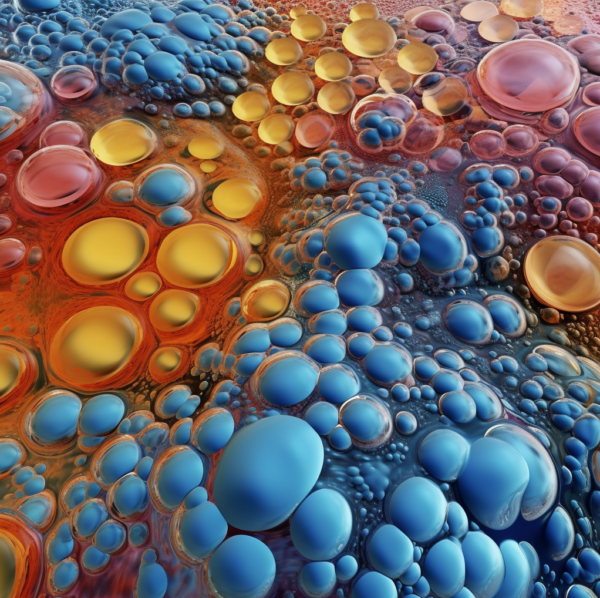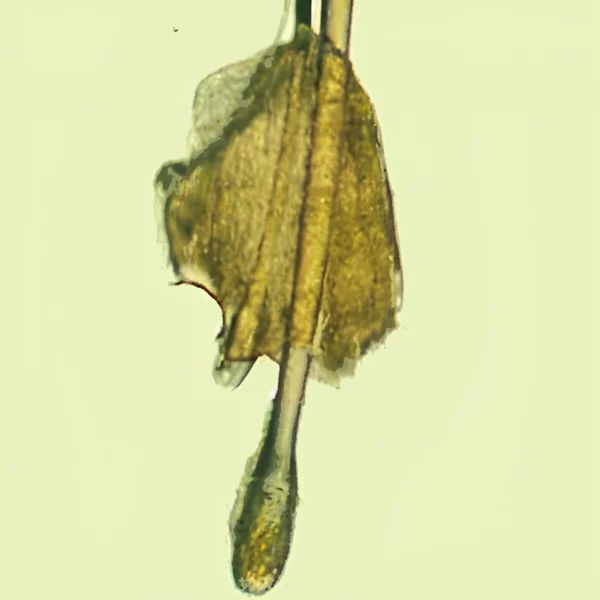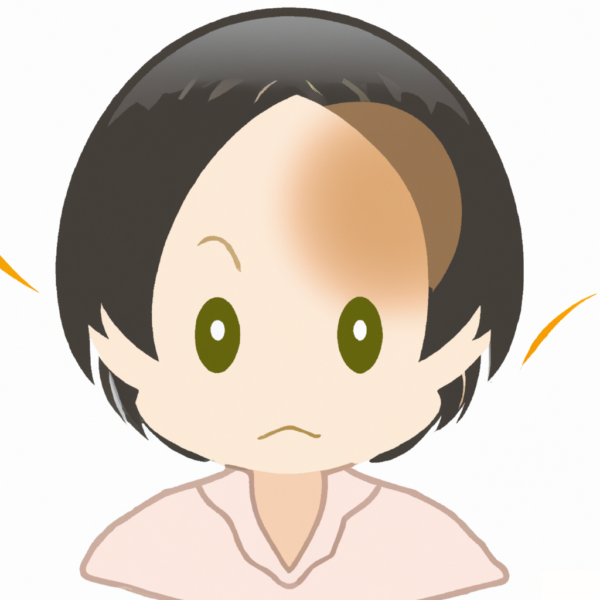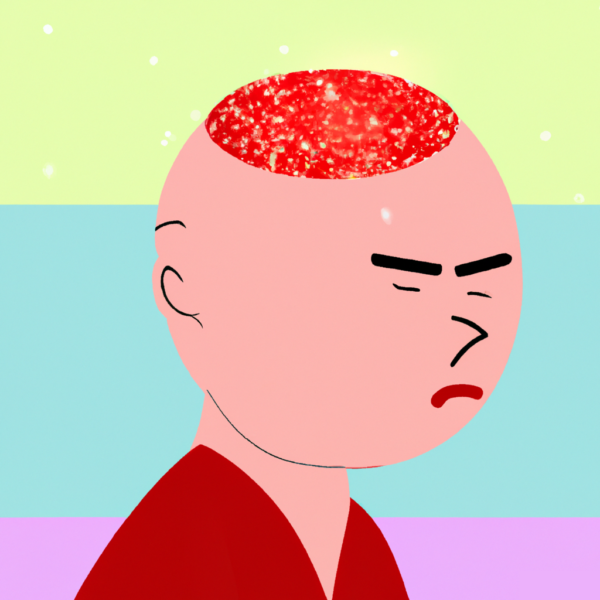Hair loss, also known as alopecia, is a common condition that can affect both men and women. It is characterized by thinning of hair or bald patches. Over the years, researchers have been probing into various treatments and therapies for hair loss. Among the more promising approaches is the use of stem cell-derived conditioned media (CM) for hair regeneration.
Conditioned media is essentially the collection of substances secreted by cells in culture, including growth factors, cytokines, and proteins. It has gained attention in the field of regenerative medicine due to its richness in growth factors and the ease of collection and transportation. Notably, conditioned media derived from human umbilical cord mesenchymal stem cells (hUC-MSCs) has shown great promise in treating androgenetic alopecia (AGA), a common form of hair loss.
Clinical Successes: In an experiment by the dermatology research team of Chung-Ang University School of Medicine, transforming growth factor β1 (TGF-β1) protein and lithium chloride were added to a culture medium containing human mesenchymal stem cells to stimulate cell growth. After a series of treatments and culture media replacements, a 16-week clinical trial involving 30 patients with mild to moderate hair loss was conducted where an extract of the condiotned medium was applied to the scalp. The results were interesting – a significant increase in average hair density, thickness, and growth rate, with no obvious adverse effects such as irritation or itching.
Another 3-month pilot study with 15 volunteers using human mesenchymal stem cell -conditioned media revealed that 86.6% of the volunteers experienced hair regeneration without apparent side effects. Additionally, adipose-derived stem cell conditioning medium (ADSC-CM) had similar effects. After 12 weeks of ADSC-CM treatment in 27 female patients with alopecia, hair density increased significantly and hair thickness improved, with no serious adverse reactions.
Based on these encouraging results, an experiment was conducted in 40 patients for scalp regeneration using ADSC-CM. The patients received intradermal injections of CM once a month for six months. The results confirmed that ADSC-CM not only promoted hair follicle regeneration but also fostered scalp regeneration between hair follicles.
How Does it Work? The mechanism behind the effectiveness of CM in hair regeneration is linked to the paracrine action of stem cells. Essentially, stem cells secrete various growth factors and cytokines that perform biological functions that are vital for hair growth.
Among the cytokines secreted by stem cells in CM are vascular endothelial growth factor (VEGF), insulin-like growth factor (IGF), hepatocyte growth factor (HGF), platelet-derived growth factor (PDGF), bone morphogenetic proteins (BMPs), interleukin-6 (IL-6), and macrophage colony-stimulating factor (M-CSF). Each of these plays a distinct role in hair growth. For example, VEGF protects hair follicle stem cells from androgen-induced apoptosis, while HGF promotes the growth of hair follicles by upregulating β-catenin. IGF, on the other hand, induces the proliferation and migration of mesenchymal stem cells, which is likely to be important for hair regeneration.
Potential Risks and Downsides: While the use of conditioned media in hair regeneration shows promising results, it is crucial to approach this treatment method with caution and acknowledge the potential risks and downsides. One of the concerns is the variability in the composition of conditioned media. Since it is derived from cell cultures, the concentration and types of growth factors and cytokines can vary. This inconsistency may lead to unpredictable results and responses in different individuals. Moreover, there is a possibility of contamination during the collection and processing of conditioned media, which can lead to unintended consequences and infections.
Additionally, the long-term effects and safety of using conditioned media for hair regeneration are not yet fully understood. Although studies have reported no serious adverse reactions in the short term, the lack of data on long-term use necessitates further investigation. There is also the concern around overstimulation of cells, which in theory, could lead to unwanted tissue growth or undue influence of other cellular activities. As the conditioned media contains no cells, the media needs to be reapplied on a regular basis to have a continued effect on hair follicles.
The Future of Hair Loss Treatment: Conditioned media derived from stem cells could represent a significant new approach in the treatment of hair loss. Its non-invasive nature, combined with the results shown in small-scale clinical trials, positions it as an encouraging alternative to current hair loss treatments. However, the treatment is still at the experimental stage of development, it is not currently available in many countries, and it may be costly, making it inaccessible for many potential users. As research continues to unveil the potentials of conditioned media, it is likely that more refined and even more effective treatments will emerge, offering new hope for those battling hair loss.
Bibliography
11711645 {11711645:TESZRIBW},{11711645:K9ITJV8K},{11711645:PKJ6BF2C},{11711645:4QBGMT2S},{11711645:7IEQQ7RV},{11711645:28R6J94T},{11711645:FE6WI7FC},{11711645:PIV84IJW},{11711645:4B8TX6SJ},{11711645:JSEA27QT} 1 vancouver 50 date asc 248 https://www.keratin.com/wp-content/plugins/zotpress/ %7B%22status%22%3A%22success%22%2C%22updateneeded%22%3Afalse%2C%22instance%22%3Afalse%2C%22meta%22%3A%7B%22request_last%22%3A0%2C%22request_next%22%3A0%2C%22used_cache%22%3Atrue%7D%2C%22data%22%3A%5B%7B%22key%22%3A%22PKJ6BF2C%22%2C%22library%22%3A%7B%22id%22%3A11711645%7D%2C%22meta%22%3A%7B%22creatorSummary%22%3A%22Park%20et%20al.%22%2C%22parsedDate%22%3A%222010-02%22%2C%22numChildren%22%3A0%7D%2C%22bib%22%3A%22%3Cdiv%20class%3D%5C%22csl-bib-body%5C%22%20style%3D%5C%22line-height%3A%201.35%3B%20%5C%22%3E%5Cn%20%20%3Cdiv%20class%3D%5C%22csl-entry%5C%22%20style%3D%5C%22clear%3A%20left%3B%20%5C%22%3E%5Cn%20%20%20%20%3Cdiv%20class%3D%5C%22csl-left-margin%5C%22%20style%3D%5C%22float%3A%20left%3B%20padding-right%3A%200.5em%3B%20text-align%3A%20right%3B%20width%3A%201em%3B%5C%22%3E1.%3C%5C%2Fdiv%3E%3Cdiv%20class%3D%5C%22csl-right-inline%5C%22%20style%3D%5C%22margin%3A%200%20.4em%200%201.5em%3B%5C%22%3EPark%20BS%2C%20Kim%20WS%2C%20Choi%20JS%2C%20Kim%20HK%2C%20Won%20JH%2C%20Ohkubo%20F%2C%20et%20al.%20Hair%20growth%20stimulated%20by%20conditioned%20medium%20of%20adipose-derived%20stem%20cells%20is%20enhanced%20by%20hypoxia%3A%20evidence%20of%20increased%20growth%20factor%20secretion.%20Biomed%20Res.%202010%20Feb%3B31%281%29%3A27%26%23x2013%3B34.%3C%5C%2Fdiv%3E%5Cn%20%20%20%3C%5C%2Fdiv%3E%5Cn%3C%5C%2Fdiv%3E%22%2C%22data%22%3A%7B%22itemType%22%3A%22journalArticle%22%2C%22title%22%3A%22Hair%20growth%20stimulated%20by%20conditioned%20medium%20of%20adipose-derived%20stem%20cells%20is%20enhanced%20by%20hypoxia%3A%20evidence%20of%20increased%20growth%20factor%20secretion%22%2C%22creators%22%3A%5B%7B%22creatorType%22%3A%22author%22%2C%22firstName%22%3A%22Byung-Soon%22%2C%22lastName%22%3A%22Park%22%7D%2C%7B%22creatorType%22%3A%22author%22%2C%22firstName%22%3A%22Won-Serk%22%2C%22lastName%22%3A%22Kim%22%7D%2C%7B%22creatorType%22%3A%22author%22%2C%22firstName%22%3A%22Joon-Seok%22%2C%22lastName%22%3A%22Choi%22%7D%2C%7B%22creatorType%22%3A%22author%22%2C%22firstName%22%3A%22Hyung-Ki%22%2C%22lastName%22%3A%22Kim%22%7D%2C%7B%22creatorType%22%3A%22author%22%2C%22firstName%22%3A%22Jong-Hyun%22%2C%22lastName%22%3A%22Won%22%7D%2C%7B%22creatorType%22%3A%22author%22%2C%22firstName%22%3A%22Fumio%22%2C%22lastName%22%3A%22Ohkubo%22%7D%2C%7B%22creatorType%22%3A%22author%22%2C%22firstName%22%3A%22Hirotaro%22%2C%22lastName%22%3A%22Fukuoka%22%7D%5D%2C%22abstractNote%22%3A%22Adipose-derived%20stem%20cells%20%28ADSCs%29%20and%20their%20secretomes%20mediate%20diverse%20skin-regeneration%20effects%2C%20such%20as%20wound-healing%20and%20antioxidant%20protection%2C%20that%20are%20enhanced%20by%20hypoxia.%20We%20investigated%20the%20hair-growth-promoting%20effect%20of%20conditioned%20medium%20%28CM%29%20of%20ADSCs%20to%20determine%20if%20ADSCs%20and%20their%20secretomes%20regenerate%20hair%20and%20if%20hypoxia%20enhances%20hair%20regeneration.%20If%20so%2C%20we%20wanted%20to%20identify%20the%20factors%20responsible%20for%20hypoxia-enhanced%20hair-regeneration.%20We%20found%20that%20ADSC-CM%20administrated%20subcutaneously%20induced%20the%20anagen%20phase%20and%20increased%20hair%20regeneration%20in%20C%283%29H%5C%2FNeH%20mice.%20In%20addition%2C%20ADSC-CM%20increased%20the%20proliferation%20of%20human%20follicle%20dermal%20papilla%20cells%20%28HFDPCs%29%20and%20human%20epithelial%20keratinocytes%20%28HEKs%29%2C%20which%20are%20derived%20from%20two%20major%20cell%20types%20present%20in%20hair%20follicles.%20We%20investigated%20the%20effect%20of%20hypoxia%20on%20ADSC%20function%20using%20the%20same%20animal%20model%20in%20which%20hypoxia%20increased%20hair%20regrowth.%20Forty-one%20growth%20factors%20in%20ADSC-CM%20from%20cells%20cultured%20under%20hypoxic%20or%20normoxic%20conditions%20were%20analyzed.%20The%20secretion%20of%20insulin-like%20growth%20factor%20binding%20protein%20%28IGFBP%29-1%2C%20IGFBP-2%2C%20macrophage%20colony-stimulating%20factor%20%28M-CSF%29%2C%20M-CSF%20receptor%2C%20platelet-derived%20growth%20factor%20receptor-beta%2C%20and%20vascular%20endothelial%20growth%20factor%20was%20significantly%20increased%20by%20hypoxia%2C%20while%20the%20secretion%20of%20epithelial%20growth%20factor%20production%20was%20decreased.%20It%20is%20reasonable%20to%20conclude%20that%20ADSCs%20promote%20hair%20growth%20via%20a%20paracrine%20mechanism%20that%20is%20enhanced%20by%20hypoxia.%22%2C%22date%22%3A%222010-02%22%2C%22language%22%3A%22eng%22%2C%22DOI%22%3A%2210.2220%5C%2Fbiomedres.31.27%22%2C%22ISSN%22%3A%221880-313X%22%2C%22url%22%3A%22%22%2C%22collections%22%3A%5B%22PPEJ6PT7%22%5D%2C%22dateModified%22%3A%222023-06-25T16%3A18%3A37Z%22%7D%7D%2C%7B%22key%22%3A%22K9ITJV8K%22%2C%22library%22%3A%7B%22id%22%3A11711645%7D%2C%22meta%22%3A%7B%22creatorSummary%22%3A%22Shin%20et%20al.%22%2C%22parsedDate%22%3A%222015-06%22%2C%22numChildren%22%3A0%7D%2C%22bib%22%3A%22%3Cdiv%20class%3D%5C%22csl-bib-body%5C%22%20style%3D%5C%22line-height%3A%201.35%3B%20%5C%22%3E%5Cn%20%20%3Cdiv%20class%3D%5C%22csl-entry%5C%22%20style%3D%5C%22clear%3A%20left%3B%20%5C%22%3E%5Cn%20%20%20%20%3Cdiv%20class%3D%5C%22csl-left-margin%5C%22%20style%3D%5C%22float%3A%20left%3B%20padding-right%3A%200.5em%3B%20text-align%3A%20right%3B%20width%3A%201em%3B%5C%22%3E1.%3C%5C%2Fdiv%3E%3Cdiv%20class%3D%5C%22csl-right-inline%5C%22%20style%3D%5C%22margin%3A%200%20.4em%200%201.5em%3B%5C%22%3EShin%20H%2C%20Ryu%20HH%2C%20Kwon%20O%2C%20Park%20BS%2C%20Jo%20SJ.%20Clinical%20use%20of%20conditioned%20media%20of%20adipose%20tissue-derived%20stem%20cells%20in%20female%20pattern%20hair%20loss%3A%20a%20retrospective%20case%20series%20study.%20Int%20J%20Dermatol.%202015%20Jun%3B54%286%29%3A730%26%23x2013%3B5.%3C%5C%2Fdiv%3E%5Cn%20%20%20%3C%5C%2Fdiv%3E%5Cn%3C%5C%2Fdiv%3E%22%2C%22data%22%3A%7B%22itemType%22%3A%22journalArticle%22%2C%22title%22%3A%22Clinical%20use%20of%20conditioned%20media%20of%20adipose%20tissue-derived%20stem%20cells%20in%20female%20pattern%20hair%20loss%3A%20a%20retrospective%20case%20series%20study%22%2C%22creators%22%3A%5B%7B%22creatorType%22%3A%22author%22%2C%22firstName%22%3A%22Hyoseung%22%2C%22lastName%22%3A%22Shin%22%7D%2C%7B%22creatorType%22%3A%22author%22%2C%22firstName%22%3A%22Hyeong%20Ho%22%2C%22lastName%22%3A%22Ryu%22%7D%2C%7B%22creatorType%22%3A%22author%22%2C%22firstName%22%3A%22Ohsang%22%2C%22lastName%22%3A%22Kwon%22%7D%2C%7B%22creatorType%22%3A%22author%22%2C%22firstName%22%3A%22Byung-Soon%22%2C%22lastName%22%3A%22Park%22%7D%2C%7B%22creatorType%22%3A%22author%22%2C%22firstName%22%3A%22Seong%20Jin%22%2C%22lastName%22%3A%22Jo%22%7D%5D%2C%22abstractNote%22%3A%22BACKGROUND%3A%20Female%20pattern%20hair%20loss%20%28FPHL%29%20is%20a%20common%20disorder%20but%20presents%20severe%20psychosocial%20problems%20in%20many%20female%20patients.%20Adipose%20tissue-derived%20stem%20cells%20%28ADSCs%29%20and%20conditioned%20media%20of%20ADSCs%20%28ADSC-CM%29%20are%20reported%20to%20promote%20hair%20growth%20in%20vitro.%20However%2C%20there%20are%20no%20clinical%20reports%20on%20the%20treatment%20of%20alopecia%20using%20ADSC-CM.%5CnOBJECTIVES%3A%20This%20study%20evaluates%20our%20clinical%20experience%20in%20the%20use%20of%20ADSC-CM%20for%20the%20treatment%20of%20FPHL.%5CnMETHODS%3A%20A%20retrospective%2C%20observational%20study%20of%20outcomes%20in%2027%20patients%20with%20FPHL%20treated%20with%20ADSC-CM%20was%20performed.%20To%20evaluate%20the%20efficacy%20of%20the%20treatment%2C%20patients%27%20medical%20records%20and%20phototrichographic%20images%20were%20analyzed.%5CnRESULTS%3A%20The%20application%20of%20ADSC-CM%20showed%20efficacy%20in%20treating%20FPHL%20after%2012%20weeks%20of%20therapy.%20Hair%20density%20increased%20from%20105.4%20to%20122.7%20hairs%5C%2Fcm%282%29%20%28P%20%3C%200.001%29.%20Hair%20thickness%20increased%20from%2057.5%20%5Cu03bcm%20to%2064.0%20%5Cu03bcm%20%28P%20%3C%200.001%29.%20None%20of%20the%20patients%20reported%20severe%20adverse%20reactions.%5CnCONCLUSIONS%3A%20The%20application%20of%20ADSC-CM%20is%20a%20potential%20treatment%20option%20for%20FPHL.%22%2C%22date%22%3A%222015-06%22%2C%22language%22%3A%22eng%22%2C%22DOI%22%3A%2210.1111%5C%2Fijd.12650%22%2C%22ISSN%22%3A%221365-4632%22%2C%22url%22%3A%22%22%2C%22collections%22%3A%5B%22PPEJ6PT7%22%5D%2C%22dateModified%22%3A%222023-06-25T16%3A19%3A55Z%22%7D%7D%2C%7B%22key%22%3A%224B8TX6SJ%22%2C%22library%22%3A%7B%22id%22%3A11711645%7D%2C%22meta%22%3A%7B%22creatorSummary%22%3A%22Kiso%20et%20al.%22%2C%22parsedDate%22%3A%222015-08%22%2C%22numChildren%22%3A0%7D%2C%22bib%22%3A%22%3Cdiv%20class%3D%5C%22csl-bib-body%5C%22%20style%3D%5C%22line-height%3A%201.35%3B%20%5C%22%3E%5Cn%20%20%3Cdiv%20class%3D%5C%22csl-entry%5C%22%20style%3D%5C%22clear%3A%20left%3B%20%5C%22%3E%5Cn%20%20%20%20%3Cdiv%20class%3D%5C%22csl-left-margin%5C%22%20style%3D%5C%22float%3A%20left%3B%20padding-right%3A%200.5em%3B%20text-align%3A%20right%3B%20width%3A%201em%3B%5C%22%3E1.%3C%5C%2Fdiv%3E%3Cdiv%20class%3D%5C%22csl-right-inline%5C%22%20style%3D%5C%22margin%3A%200%20.4em%200%201.5em%3B%5C%22%3EKiso%20M%2C%20Hamazaki%20TS%2C%20Itoh%20M%2C%20Kikuchi%20S%2C%20Nakagawa%20H%2C%20Okochi%20H.%20Synergistic%20effect%20of%20PDGF%20and%20FGF2%20for%20cell%20proliferation%20and%20hair%20inductive%20activity%20in%20murine%20vibrissal%20dermal%20papilla%20in%20vitro.%20J%20Dermatol%20Sci.%202015%20Aug%3B79%282%29%3A110%26%23x2013%3B8.%3C%5C%2Fdiv%3E%5Cn%20%20%20%3C%5C%2Fdiv%3E%5Cn%3C%5C%2Fdiv%3E%22%2C%22data%22%3A%7B%22itemType%22%3A%22journalArticle%22%2C%22title%22%3A%22Synergistic%20effect%20of%20PDGF%20and%20FGF2%20for%20cell%20proliferation%20and%20hair%20inductive%20activity%20in%20murine%20vibrissal%20dermal%20papilla%20in%20vitro%22%2C%22creators%22%3A%5B%7B%22creatorType%22%3A%22author%22%2C%22firstName%22%3A%22Masahiro%22%2C%22lastName%22%3A%22Kiso%22%7D%2C%7B%22creatorType%22%3A%22author%22%2C%22firstName%22%3A%22Tatsuo%20S.%22%2C%22lastName%22%3A%22Hamazaki%22%7D%2C%7B%22creatorType%22%3A%22author%22%2C%22firstName%22%3A%22Munenari%22%2C%22lastName%22%3A%22Itoh%22%7D%2C%7B%22creatorType%22%3A%22author%22%2C%22firstName%22%3A%22Sota%22%2C%22lastName%22%3A%22Kikuchi%22%7D%2C%7B%22creatorType%22%3A%22author%22%2C%22firstName%22%3A%22Hidemi%22%2C%22lastName%22%3A%22Nakagawa%22%7D%2C%7B%22creatorType%22%3A%22author%22%2C%22firstName%22%3A%22Hitoshi%22%2C%22lastName%22%3A%22Okochi%22%7D%5D%2C%22abstractNote%22%3A%22BACKGROUND%3A%20The%20dermal%20papilla%20is%20composed%20of%20a%20small%20clump%20of%20mesenchymal%20cells%2C%20called%20dermal%20papilla%20cells%20%28DPCs%29.%20DPCs%20closely%20interact%20with%20epidermal%20cells%20to%20give%20rise%20to%20hair%20follicles%20and%20shafts%20during%20hair%20follicle%20development%20and%20the%20hair%20cycle.%20DPCs%20are%20promising%20cell%20sources%20for%20hair%20regeneration%20therapy%20for%20alopecia%20patients.%20However%2C%20once%20DPCs%20are%20put%20into%20conventional%20two-dimensional%20culture%20conditions%2C%20they%20quickly%20lose%20their%20capability%20to%20produce%20hair%20follicles.%5CnOBJECTIVE%3A%20We%20aimed%20to%20expand%20a%20sufficiently%20large%20population%20of%20DPCs%20that%20retain%20their%20hair%20inductive%20activity.%5CnMETHODS%3A%20Murine%20DPCs%20were%20cultured%20in%20the%20presence%20of%20platelet-derived%20growth%20factor-AA%20%28PDGF-AA%29%20and%20fibroblast%20growth%20factor%202%20%28FGF2%29.%20Expressions%20of%20follicular-related%20genes%20were%20analyzed%20by%20real%20time%20PCR%20and%20hair%20inductive%20activity%20was%20determined%20by%20patch%20assay%20and%20chamber%20assay%20in%20vivo.%5CnRESULTS%3A%20FGF2%20significantly%20increased%20the%20expression%20of%20platelet-derived%20growth%20factor%20receptor%20alpha%20%28PDGFR%5Cu03b1%29%20in%20cultured%20vibrissal%20DPCs.%20PDGF-AA%2C%20a%20ligand%20of%20PDGFR%5Cu03b1%2C%20promoted%20proliferation%20of%20DPCs%20synergistically%20when%20utilized%20with%20FGF2%20and%20enhanced%20the%20expression%20of%20several%20follicular-related%20genes%20in%20DPCs.%20Hair%20reconstitution%20assays%20revealed%20that%20DPCs%20treated%20with%20both%20PDGF-AA%20and%20FGF-2%20were%20able%20to%20maintain%20their%20hair%20inductive%20activity%20better%20than%20those%20treated%20with%20FGF2%20alone.%5CnCONCLUSION%3A%20Both%20cell%20proliferation%20and%20hair%20inductive%20activity%20in%20murine%20DPCs%20are%20maintained%20by%20the%20synergistic%20effect%20of%20FGF2%20and%20PDGF-AA.%22%2C%22date%22%3A%222015-08%22%2C%22language%22%3A%22eng%22%2C%22DOI%22%3A%2210.1016%5C%2Fj.jdermsci.2015.04.007%22%2C%22ISSN%22%3A%221873-569X%22%2C%22url%22%3A%22%22%2C%22collections%22%3A%5B%22PPEJ6PT7%22%5D%2C%22dateModified%22%3A%222023-06-25T16%3A18%3A16Z%22%7D%7D%2C%7B%22key%22%3A%224QBGMT2S%22%2C%22library%22%3A%7B%22id%22%3A11711645%7D%2C%22meta%22%3A%7B%22creatorSummary%22%3A%22Ramdasi%20and%20Tiwari%22%2C%22parsedDate%22%3A%222016%22%2C%22numChildren%22%3A0%7D%2C%22bib%22%3A%22%3Cdiv%20class%3D%5C%22csl-bib-body%5C%22%20style%3D%5C%22line-height%3A%201.35%3B%20%5C%22%3E%5Cn%20%20%3Cdiv%20class%3D%5C%22csl-entry%5C%22%20style%3D%5C%22clear%3A%20left%3B%20%5C%22%3E%5Cn%20%20%20%20%3Cdiv%20class%3D%5C%22csl-left-margin%5C%22%20style%3D%5C%22float%3A%20left%3B%20padding-right%3A%200.5em%3B%20text-align%3A%20right%3B%20width%3A%201em%3B%5C%22%3E1.%3C%5C%2Fdiv%3E%3Cdiv%20class%3D%5C%22csl-right-inline%5C%22%20style%3D%5C%22margin%3A%200%20.4em%200%201.5em%3B%5C%22%3ERamdasi%20S%2C%20Tiwari%20SK.%20Human%20Mesenchymal%20Stem%20Cell-Derived%20Conditioned%20Media%20for%20Hair%20Regeneration%20Applications.%20J%20Stem%20Cells.%202016%3B11%284%29%3A201%26%23x2013%3B11.%3C%5C%2Fdiv%3E%5Cn%20%20%20%3C%5C%2Fdiv%3E%5Cn%3C%5C%2Fdiv%3E%22%2C%22data%22%3A%7B%22itemType%22%3A%22journalArticle%22%2C%22title%22%3A%22Human%20Mesenchymal%20Stem%20Cell-Derived%20Conditioned%20Media%20for%20Hair%20Regeneration%20Applications%22%2C%22creators%22%3A%5B%7B%22creatorType%22%3A%22author%22%2C%22firstName%22%3A%22Sushilkumar%22%2C%22lastName%22%3A%22Ramdasi%22%7D%2C%7B%22creatorType%22%3A%22author%22%2C%22firstName%22%3A%22Shashi%20Kant%22%2C%22lastName%22%3A%22Tiwari%22%7D%5D%2C%22abstractNote%22%3A%22Hair%20loss%20can%20have%20major%20psychological%20impact%20on%20affected%20population%20belonging%20to%20varied%20ethnic%20background.%20Hair%20is%20a%20mini%20organ%20in%20itself%20and%20serves%20many%20distinguishing%20functions%20ranging%20from%20maintaining%20body%20temperature%20to%20promoting%20social%20interactions.%20Major%20cause%20of%20hair%20loss%20is%20androgenic%20alopecia.%20Hair%20follicles%20possess%20receptor%20for%20androgen.%20However%2C%20DHT%20%28Dihydrotestosterone%29%20in%20excess%20results%20into%20shrinkage%20of%20hair%20follicle%20affecting%20hair%20growth%20adversely.%20The%20present%20review%20is%20focused%20on%20etiology%20of%20hair%20loss%2C%20traditional%20treatment%20approach%20and%20their%20limitations%20with%20side%20effects%20with%20special%20emphasis%20on%20unique%20properties%20of%20stem%20cells%2C%20favourable%20growth%20factors%20secreted%20by%20stem%20cells%20and%20strategies%20to%20enhance%20favourable%20growth%20factor%5C%2Fcytokine%20production%20for%20hair%20loss%20therapeutics.%20We%20discussed%20in%20details%20the%20present%20available%20treatment%20options%20for%20hair%20loss%20like%20drugs%20%28Finasteride%20and%20Minoxidil%29%2C%20follicular%20hair%20transplant%2C%20laser%20therapy%20and%20serum%20therapy.%20These%20treatment%20options%20have%20their%20own%20disadvantages%20and%20side%20effects%20with%20appropriate%20alerts%20from%20regulatory%20authorities.%20The%20side%20effects%20of%20these%20modalities%20cannot%20be%20ignored%20and%20demands%20alternate%20therapy%20approach%20with%20less%20or%20no%20side%20effects.%20We%20feel%20that%20the%20stem%20cell%20therapy%20is%20advancing%20and%20is%20a%20promising%20modality%20in%20near%20future%20owing%20to%20its%20advantages%20and%20promising%20outcomes.%20This%20review%20article%20discusses%20possible%20stem%20cell%20therapy%20for%20hair%20regrowth%20and%20its%20advantages.%20We%20focused%20on%20use%20of%20conditioned%20media%20derived%20from%20stem%20cells%20instead%20of%20using%20stem%20cells%20directly%20for%20the%20therapy.%22%2C%22date%22%3A%222016%22%2C%22language%22%3A%22eng%22%2C%22DOI%22%3A%22%22%2C%22ISSN%22%3A%221556-8539%22%2C%22url%22%3A%22%22%2C%22collections%22%3A%5B%22PPEJ6PT7%22%5D%2C%22dateModified%22%3A%222023-06-25T16%3A20%3A46Z%22%7D%7D%2C%7B%22key%22%3A%22TESZRIBW%22%2C%22library%22%3A%7B%22id%22%3A11711645%7D%2C%22meta%22%3A%7B%22creatorSummary%22%3A%22Shin%20et%20al.%22%2C%22parsedDate%22%3A%222017%22%2C%22numChildren%22%3A0%7D%2C%22bib%22%3A%22%3Cdiv%20class%3D%5C%22csl-bib-body%5C%22%20style%3D%5C%22line-height%3A%201.35%3B%20%5C%22%3E%5Cn%20%20%3Cdiv%20class%3D%5C%22csl-entry%5C%22%20style%3D%5C%22clear%3A%20left%3B%20%5C%22%3E%5Cn%20%20%20%20%3Cdiv%20class%3D%5C%22csl-left-margin%5C%22%20style%3D%5C%22float%3A%20left%3B%20padding-right%3A%200.5em%3B%20text-align%3A%20right%3B%20width%3A%201em%3B%5C%22%3E1.%3C%5C%2Fdiv%3E%3Cdiv%20class%3D%5C%22csl-right-inline%5C%22%20style%3D%5C%22margin%3A%200%20.4em%200%201.5em%3B%5C%22%3EShin%20H%2C%20Won%20CH%2C%20Chung%20WK%2C%20Park%20BS.%20Up-to-date%20Clinical%20Trials%20of%20Hair%20Regeneration%20Using%20Conditioned%20Media%20of%20Adipose-Derived%20Stem%20Cells%20in%20Male%20and%20Female%20Pattern%20Hair%20Loss.%20Curr%20Stem%20Cell%20Res%20Ther.%202017%3B12%287%29%3A524%26%23x2013%3B30.%3C%5C%2Fdiv%3E%5Cn%20%20%20%3C%5C%2Fdiv%3E%5Cn%3C%5C%2Fdiv%3E%22%2C%22data%22%3A%7B%22itemType%22%3A%22journalArticle%22%2C%22title%22%3A%22Up-to-date%20Clinical%20Trials%20of%20Hair%20Regeneration%20Using%20Conditioned%20Media%20of%20Adipose-Derived%20Stem%20Cells%20in%20Male%20and%20Female%20Pattern%20Hair%20Loss%22%2C%22creators%22%3A%5B%7B%22creatorType%22%3A%22author%22%2C%22firstName%22%3A%22Hyoseung%22%2C%22lastName%22%3A%22Shin%22%7D%2C%7B%22creatorType%22%3A%22author%22%2C%22firstName%22%3A%22Chong%20Hyun%22%2C%22lastName%22%3A%22Won%22%7D%2C%7B%22creatorType%22%3A%22author%22%2C%22firstName%22%3A%22Woon-Kyung%22%2C%22lastName%22%3A%22Chung%22%7D%2C%7B%22creatorType%22%3A%22author%22%2C%22firstName%22%3A%22Byung-Soon%22%2C%22lastName%22%3A%22Park%22%7D%5D%2C%22abstractNote%22%3A%22BACKGROUND%3A%20The%20primary%20roles%20of%20mesenchymal%20stem%20cells%20%28MSCs%29%20are%20to%20maintain%20the%20stem%20cell%20niche%2C%20facilitate%20recovery%20after%20injury%2C%20and%20ensure%20healthy%20aging%20and%20the%20homeostasis%20of%20organ%20and%20tissues.%20MSCs%20have%20recently%20emerged%20as%20a%20new%20therapeutic%20option%20for%20hair%20loss.%5CnOBJECTIVE%3A%20Since%20adipose-derived%20stem%20cells%20%28ADSCs%29%20are%20the%20most%20accessible%20sources%20of%20MSCs%2C%20ADSCbased%20hair%20regeneration%20is%20investigated.%20Besides%20replacing%20degenerated%20cells%20in%20affected%20organs%2C%20ADSCs%20exhibit%20their%20beneficial%20effects%20through%20the%20paracrine%20actions%20of%20various%20cytokines%20and%20growth%20factors.%5CnRESULTS%3A%20Several%20laboratory%20experiments%20and%20animal%20studies%20have%20shown%20that%20ADSC-related%20proteins%20can%20stimulate%20hair%20growth.%20In%20addition%2C%20we%20introduce%20our%20clinical%20pilot%20studies%20using%20conditioned%20media%20of%20ADSCs%20for%20pattern%20hair%20loss%20in%20men%20and%20women.%5CnCONCLUSION%3A%20We%20believe%20that%20conditioned%20media%20of%20ADSCs%20represents%20a%20promising%20alternative%20therapeutic%20strategy%20for%20hair%20loss.%20We%20also%20discuss%20practical%20therapeutic%20challenges%20and%20the%20direction%20of%20future%20research.%22%2C%22date%22%3A%222017%22%2C%22language%22%3A%22eng%22%2C%22DOI%22%3A%2210.2174%5C%2F1574888X12666170504120244%22%2C%22ISSN%22%3A%222212-3946%22%2C%22url%22%3A%22%22%2C%22collections%22%3A%5B%22PPEJ6PT7%22%5D%2C%22dateModified%22%3A%222023-06-25T16%3A20%3A29Z%22%7D%7D%2C%7B%22key%22%3A%22FE6WI7FC%22%2C%22library%22%3A%7B%22id%22%3A11711645%7D%2C%22meta%22%3A%7B%22creatorSummary%22%3A%22Xiao%20et%20al.%22%2C%22parsedDate%22%3A%222020%22%2C%22numChildren%22%3A0%7D%2C%22bib%22%3A%22%3Cdiv%20class%3D%5C%22csl-bib-body%5C%22%20style%3D%5C%22line-height%3A%201.35%3B%20%5C%22%3E%5Cn%20%20%3Cdiv%20class%3D%5C%22csl-entry%5C%22%20style%3D%5C%22clear%3A%20left%3B%20%5C%22%3E%5Cn%20%20%20%20%3Cdiv%20class%3D%5C%22csl-left-margin%5C%22%20style%3D%5C%22float%3A%20left%3B%20padding-right%3A%200.5em%3B%20text-align%3A%20right%3B%20width%3A%201em%3B%5C%22%3E1.%3C%5C%2Fdiv%3E%3Cdiv%20class%3D%5C%22csl-right-inline%5C%22%20style%3D%5C%22margin%3A%200%20.4em%200%201.5em%3B%5C%22%3EXiao%20S%2C%20Deng%20Y%2C%20Mo%20X%2C%20Liu%20Z%2C%20Wang%20D%2C%20Deng%20C%2C%20et%20al.%20Promotion%20of%20Hair%20Growth%20by%20Conditioned%20Medium%20from%20Extracellular%20Matrix%5C%2FStromal%20Vascular%20Fraction%20Gel%20in%20C57BL%5C%2F6%20Mice.%20Stem%20Cells%20Int.%202020%3B2020%3A9054514.%3C%5C%2Fdiv%3E%5Cn%20%20%20%3C%5C%2Fdiv%3E%5Cn%3C%5C%2Fdiv%3E%22%2C%22data%22%3A%7B%22itemType%22%3A%22journalArticle%22%2C%22title%22%3A%22Promotion%20of%20Hair%20Growth%20by%20Conditioned%20Medium%20from%20Extracellular%20Matrix%5C%2FStromal%20Vascular%20Fraction%20Gel%20in%20C57BL%5C%2F6%20Mice%22%2C%22creators%22%3A%5B%7B%22creatorType%22%3A%22author%22%2C%22firstName%22%3A%22Shune%22%2C%22lastName%22%3A%22Xiao%22%7D%2C%7B%22creatorType%22%3A%22author%22%2C%22firstName%22%3A%22Yurong%22%2C%22lastName%22%3A%22Deng%22%7D%2C%7B%22creatorType%22%3A%22author%22%2C%22firstName%22%3A%22Xiaojin%22%2C%22lastName%22%3A%22Mo%22%7D%2C%7B%22creatorType%22%3A%22author%22%2C%22firstName%22%3A%22Zhiyuan%22%2C%22lastName%22%3A%22Liu%22%7D%2C%7B%22creatorType%22%3A%22author%22%2C%22firstName%22%3A%22Dali%22%2C%22lastName%22%3A%22Wang%22%7D%2C%7B%22creatorType%22%3A%22author%22%2C%22firstName%22%3A%22Chengliang%22%2C%22lastName%22%3A%22Deng%22%7D%2C%7B%22creatorType%22%3A%22author%22%2C%22firstName%22%3A%22Zairong%22%2C%22lastName%22%3A%22Wei%22%7D%5D%2C%22abstractNote%22%3A%22Adipose-derived%20stem%20cell-%20%28ADSC-%29%20based%20regenerative%20medicine%20has%20expanded%20to%20include%20the%20treatment%20of%20hair%20loss.%20However%2C%20stem%20cell%20therapy%20remains%20a%20relatively%20recent%20technique%2C%20and%20reports%20of%20its%20use%20for%20treating%20alopecia%20are%20rare.%20ADSCs%20exert%20biological%20functions%20via%20the%20paracrine%20actions%20of%20various%20growth%20factors%20and%20cytokines.%20Conditioned%20medium%20from%20ADSCs%20%28ADSCs-CM%29%20is%20a%20cell-free%20suspension%20rich%20in%20growth%20factors%20and%20cytokines%20that%20has%20demonstrated%20a%20significant%20role%20in%20stimulating%20hair%20growth%2C%20with%20encouraging%20outcomes%20in%20terms%20of%20hair%20regeneration%20and%20hair%20growth.%20Extracellular%20matrix%5C%2Fstromal%20vascular%20fraction%20gel%20%28ECM%5C%2FSVF-gel%29%20is%20an%20ADSC-%20and%20adipose%20native%20extracellular%20matrix-enriched%20product%20for%20cytotherapy.%20In%20this%20study%2C%20we%20compared%20the%20effects%20of%20CM%20from%20ECM%5C%2FSVF-gel%20%28ECM%5C%2FSVF-CM%29%20and%20from%20stem%20cells%20%28SVF-CM%29%20on%20hair%20growth%20in%20mice.%20ECM%5C%2FSVF-CM%20stimulated%20hair%20growth%20more%20than%20SVF-CM%2C%20through%20promoting%20the%20proliferation%20of%20dermal%20papilla%20cells%20and%20cells%20in%20the%20bulge%2C%20neovascularization%2C%20and%20anagen%20induction.%20ECM%5C%2FSVF-CM%20might%2C%20thus%2C%20provide%20an%20effective%20and%20improved%20strategy%20for%20promoting%20hair%20growth.%20These%20data%20provide%20a%20theoretical%20foundation%20for%20the%20clinical%20administration%20of%20ECM%5C%2FSVF-CM%20for%20the%20treatment%20of%20hair%20loss.%22%2C%22date%22%3A%222020%22%2C%22language%22%3A%22eng%22%2C%22DOI%22%3A%2210.1155%5C%2F2020%5C%2F9054514%22%2C%22ISSN%22%3A%221687-966X%22%2C%22url%22%3A%22%22%2C%22collections%22%3A%5B%22PPEJ6PT7%22%5D%2C%22dateModified%22%3A%222023-06-25T16%3A22%3A24Z%22%7D%7D%2C%7B%22key%22%3A%22JSEA27QT%22%2C%22library%22%3A%7B%22id%22%3A11711645%7D%2C%22meta%22%3A%7B%22creatorSummary%22%3A%22Ou%20et%20al.%22%2C%22parsedDate%22%3A%222020-01%22%2C%22numChildren%22%3A0%7D%2C%22bib%22%3A%22%3Cdiv%20class%3D%5C%22csl-bib-body%5C%22%20style%3D%5C%22line-height%3A%201.35%3B%20%5C%22%3E%5Cn%20%20%3Cdiv%20class%3D%5C%22csl-entry%5C%22%20style%3D%5C%22clear%3A%20left%3B%20%5C%22%3E%5Cn%20%20%20%20%3Cdiv%20class%3D%5C%22csl-left-margin%5C%22%20style%3D%5C%22float%3A%20left%3B%20padding-right%3A%200.5em%3B%20text-align%3A%20right%3B%20width%3A%201em%3B%5C%22%3E1.%3C%5C%2Fdiv%3E%3Cdiv%20class%3D%5C%22csl-right-inline%5C%22%20style%3D%5C%22margin%3A%200%20.4em%200%201.5em%3B%5C%22%3EOu%20KL%2C%20Kuo%20YW%2C%20Wu%20CY%2C%20Huang%20BH%2C%20Pai%20FT%2C%20Chou%20HH%2C%20et%20al.%20The%20Potential%20of%20a%20Hair%20Follicle%20Mesenchymal%20Stem%20Cell-Conditioned%20Medium%20for%20Wound%20Healing%20and%20Hair%20Follicle%20Regeneration.%20Applied%20Sciences.%202020%20Jan%3B10%288%29%3A2646.%3C%5C%2Fdiv%3E%5Cn%20%20%20%3C%5C%2Fdiv%3E%5Cn%3C%5C%2Fdiv%3E%22%2C%22data%22%3A%7B%22itemType%22%3A%22journalArticle%22%2C%22title%22%3A%22The%20Potential%20of%20a%20Hair%20Follicle%20Mesenchymal%20Stem%20Cell-Conditioned%20Medium%20for%20Wound%20Healing%20and%20Hair%20Follicle%20Regeneration%22%2C%22creators%22%3A%5B%7B%22creatorType%22%3A%22author%22%2C%22firstName%22%3A%22Keng-Liang%22%2C%22lastName%22%3A%22Ou%22%7D%2C%7B%22creatorType%22%3A%22author%22%2C%22firstName%22%3A%22Yun-Wen%22%2C%22lastName%22%3A%22Kuo%22%7D%2C%7B%22creatorType%22%3A%22author%22%2C%22firstName%22%3A%22Chia-Yu%22%2C%22lastName%22%3A%22Wu%22%7D%2C%7B%22creatorType%22%3A%22author%22%2C%22firstName%22%3A%22Bai-Hung%22%2C%22lastName%22%3A%22Huang%22%7D%2C%7B%22creatorType%22%3A%22author%22%2C%22firstName%22%3A%22Fang-Tzu%22%2C%22lastName%22%3A%22Pai%22%7D%2C%7B%22creatorType%22%3A%22author%22%2C%22firstName%22%3A%22Hsin-Hua%22%2C%22lastName%22%3A%22Chou%22%7D%2C%7B%22creatorType%22%3A%22author%22%2C%22firstName%22%3A%22Takashi%22%2C%22lastName%22%3A%22Saito%22%7D%2C%7B%22creatorType%22%3A%22author%22%2C%22firstName%22%3A%22Takaaki%22%2C%22lastName%22%3A%22Ueno%22%7D%2C%7B%22creatorType%22%3A%22author%22%2C%22firstName%22%3A%22Yung-Chieh%22%2C%22lastName%22%3A%22Cho%22%7D%2C%7B%22creatorType%22%3A%22author%22%2C%22firstName%22%3A%22Mao-Suan%22%2C%22lastName%22%3A%22Huang%22%7D%5D%2C%22abstractNote%22%3A%22The%20study%20elucidated%20the%20wound%20healing%20and%20hair%20regeneration%20properties%20of%20a%20conditioned%20medium%20prepared%20from%20the%20culture%20of%20human%20hair%20follicle%20mesenchymal%20stem%20cells%20%28HFMSCs%29.%20The%20wound-healing%20effects%20of%20mesenchymal%20stem%20cell-conditioned%20medium%20%28MSC-CM%29%20were%20tested%20in%20vitro%20using%20scratch%20assays%20co-cultured%20with%20HaCaT%20keratinocyte%20and%20monitored%20through%20optical%20microscopy.%20The%20cell%20proliferation%20of%20HFMSCs%20and%20the%20HaCaT%20keratinocyte%20were%20observed%20in%20the%20presence%20of%20different%20kinds%20of%20drugs%20including%20UK5099%2C%20sodium%20L-lactate%2C%20lactate%20dehydrogenase-A%2C%20MSC-CM%2C%20caffeine%2C%20and%20caffeic%20acid.%20The%20hair%20regeneration%20properties%20were%20investigated%20in%20vivo%20by%20administrating%20the%20MSC-CM%20solutions%20to%20adult%20B6%20mouse%20models.%20For%20quantification%2C%20hematoxylin%20and%20eosin%20staining%20were%20performed%20following%20euthanasia.%20In%20vitro%20results%20revealed%20that%20MSC-CM%20promotes%20dermal%20cell%20migrations%20and%20enhances%20proliferation%20of%20HFMSCs%20and%20HaCaT%20keratinocytes%2C%20demonstrating%20wound-healing%20properties.%20Moreover%2C%20when%20the%20MSC-CM%20solutions%20were%20applied%20to%20the%20shaved%20mouse%20skin%2C%20a%20dark%20area%20that%20expanded%20overtime%20was%20seen.%20Although%20no%20hair%20growth%20was%20found%2C%20histological%20analysis%20proved%20that%20a%20fat%20layer%20thickness%20increment%20was%20found%20under%20the%20mouse%5Cu2019s%20skin%2C%20ultimately%20projecting%20the%20formation%20of%20new%20hair%20growth.%20MSC-CM%20promotes%20the%20migration%20and%20proliferation%20of%20dermal%20keratinocytes%20that%20are%20beneficial%20for%20wound%20healing%20and%20hair%20growth.%20It%20is%20believed%20that%20MSC-CM%20can%20potentially%20serve%20as%20the%20basis%20of%20alternative%20therapeutic%20applications%20for%20wound%20closure%20and%20skin%20regeneration%20as%20well%20as%20hair%20growth%20stimulation%20and%20hair%20loss%20prevention%20in%20alopecia.%22%2C%22date%22%3A%222020%5C%2F1%22%2C%22language%22%3A%22en%22%2C%22DOI%22%3A%2210.3390%5C%2Fapp10082646%22%2C%22ISSN%22%3A%222076-3417%22%2C%22url%22%3A%22%22%2C%22collections%22%3A%5B%22PPEJ6PT7%22%5D%2C%22dateModified%22%3A%222023-06-25T16%3A18%3A00Z%22%7D%7D%2C%7B%22key%22%3A%2228R6J94T%22%2C%22library%22%3A%7B%22id%22%3A11711645%7D%2C%22meta%22%3A%7B%22creatorSummary%22%3A%22Oh%20et%20al.%22%2C%22parsedDate%22%3A%222020-05-28%22%2C%22numChildren%22%3A0%7D%2C%22bib%22%3A%22%3Cdiv%20class%3D%5C%22csl-bib-body%5C%22%20style%3D%5C%22line-height%3A%201.35%3B%20%5C%22%3E%5Cn%20%20%3Cdiv%20class%3D%5C%22csl-entry%5C%22%20style%3D%5C%22clear%3A%20left%3B%20%5C%22%3E%5Cn%20%20%20%20%3Cdiv%20class%3D%5C%22csl-left-margin%5C%22%20style%3D%5C%22float%3A%20left%3B%20padding-right%3A%200.5em%3B%20text-align%3A%20right%3B%20width%3A%201em%3B%5C%22%3E1.%3C%5C%2Fdiv%3E%3Cdiv%20class%3D%5C%22csl-right-inline%5C%22%20style%3D%5C%22margin%3A%200%20.4em%200%201.5em%3B%5C%22%3EOh%20HA%2C%20Kwak%20J%2C%20Kim%20BJ%2C%20Jin%20HJ%2C%20Park%20WS%2C%20Choi%20SJ%2C%20et%20al.%20Migration%20Inhibitory%20Factor%20in%20Conditioned%20Medium%20from%20Human%20Umbilical%20Cord%20Blood-Derived%20Mesenchymal%20Stromal%20Cells%20Stimulates%20Hair%20Growth.%20Cells.%202020%20May%2028%3B9%286%29%3A1344.%3C%5C%2Fdiv%3E%5Cn%20%20%20%3C%5C%2Fdiv%3E%5Cn%3C%5C%2Fdiv%3E%22%2C%22data%22%3A%7B%22itemType%22%3A%22journalArticle%22%2C%22title%22%3A%22Migration%20Inhibitory%20Factor%20in%20Conditioned%20Medium%20from%20Human%20Umbilical%20Cord%20Blood-Derived%20Mesenchymal%20Stromal%20Cells%20Stimulates%20Hair%20Growth%22%2C%22creators%22%3A%5B%7B%22creatorType%22%3A%22author%22%2C%22firstName%22%3A%22Hyun%20Ah%22%2C%22lastName%22%3A%22Oh%22%7D%2C%7B%22creatorType%22%3A%22author%22%2C%22firstName%22%3A%22Jihye%22%2C%22lastName%22%3A%22Kwak%22%7D%2C%7B%22creatorType%22%3A%22author%22%2C%22firstName%22%3A%22Beom%20Joon%22%2C%22lastName%22%3A%22Kim%22%7D%2C%7B%22creatorType%22%3A%22author%22%2C%22firstName%22%3A%22Hye%20Jin%22%2C%22lastName%22%3A%22Jin%22%7D%2C%7B%22creatorType%22%3A%22author%22%2C%22firstName%22%3A%22Won%20Seok%22%2C%22lastName%22%3A%22Park%22%7D%2C%7B%22creatorType%22%3A%22author%22%2C%22firstName%22%3A%22Soo%20Jin%22%2C%22lastName%22%3A%22Choi%22%7D%2C%7B%22creatorType%22%3A%22author%22%2C%22firstName%22%3A%22Wonil%22%2C%22lastName%22%3A%22Oh%22%7D%2C%7B%22creatorType%22%3A%22author%22%2C%22firstName%22%3A%22Soyoun%22%2C%22lastName%22%3A%22Um%22%7D%5D%2C%22abstractNote%22%3A%22Conventional%20therapeutic%20applications%20of%20mesenchymal%20stromal%20cells%20%28MSCs%29%20focus%20on%20cell%20replacement%20and%20differentiation%3B%20however%2C%20increasing%20evidence%20suggests%20that%20most%20of%20their%20therapeutic%20effects%20are%20carried%20out%20by%20their%20various%20secretions.%20This%20study%20investigated%20the%20application%20of%20conditioned%20medium%20%28CM%29%20from%20human%20umbilical%20cord%20blood-derived%20MSCs%20%28hUCB-MSCs%29%20to%20improve%20hair%20growth%20and%20developed%20a%20method%20to%20reliably%20produce%20this%20optimized%20CM.%20Primed%20MSC-derived%20CM%20%28P-CM%29%20with%20combinations%20of%20TGF-%5Cu03b21%20and%20LiCl%20was%20optimized%20by%20comparing%20its%20effects%20on%20the%20cell%20viability%20of%20dermal%20papilla%20cells%20%28DPCs%29.%20P-CM%20significantly%20increased%20the%20viability%20of%20DPCs%20compared%20to%20CM.%20The%20secretion%20of%20vascular%20endothelial%20growth%20factor%20%28VEGF%29%20in%20DPCs%20was%20regulated%20by%20the%20macrophage%20migration%20inhibitory%20factor%20%28MIF%29%20in%20the%20P-CM%20secreted%20by%20MSCs.%20These%20findings%20suggest%20that%20P-CM%20can%20improve%20the%20efficacy%20in%20hair%20growth%20via%20a%20paracrine%20mechanism%20and%20that%20MIF%20in%20P-CM%20exerts%20hair%20growth-promoting%20effects%20via%20a%20VEGF-related%20%5Cu03b2-catenin%20and%20p-GSK-3%5Cu03b2%20%5BSER9%5D%20signaling%20pathway.%20Furthermore%2C%20clinical%20trials%20have%20shown%20that%205%25%20P-CM%20improved%20androgenetic%20alopecia%20through%20producing%20an%20increased%20hair%20density%2C%20thickness%2C%20and%20growth%20rate%2C%20suggesting%20that%20this%20topical%20agent%20may%20be%20a%20novel%20and%20effective%20treatment%20option%20for%20patients%20with%20androgenetic%20alopecia.%22%2C%22date%22%3A%222020-05-28%22%2C%22language%22%3A%22eng%22%2C%22DOI%22%3A%2210.3390%5C%2Fcells9061344%22%2C%22ISSN%22%3A%222073-4409%22%2C%22url%22%3A%22%22%2C%22collections%22%3A%5B%22PPEJ6PT7%22%5D%2C%22dateModified%22%3A%222023-06-25T16%3A22%3A48Z%22%7D%7D%2C%7B%22key%22%3A%22PIV84IJW%22%2C%22library%22%3A%7B%22id%22%3A11711645%7D%2C%22meta%22%3A%7B%22creatorSummary%22%3A%22Narita%20et%20al.%22%2C%22parsedDate%22%3A%222020-06%22%2C%22numChildren%22%3A0%7D%2C%22bib%22%3A%22%3Cdiv%20class%3D%5C%22csl-bib-body%5C%22%20style%3D%5C%22line-height%3A%201.35%3B%20%5C%22%3E%5Cn%20%20%3Cdiv%20class%3D%5C%22csl-entry%5C%22%20style%3D%5C%22clear%3A%20left%3B%20%5C%22%3E%5Cn%20%20%20%20%3Cdiv%20class%3D%5C%22csl-left-margin%5C%22%20style%3D%5C%22float%3A%20left%3B%20padding-right%3A%200.5em%3B%20text-align%3A%20right%3B%20width%3A%201em%3B%5C%22%3E1.%3C%5C%2Fdiv%3E%3Cdiv%20class%3D%5C%22csl-right-inline%5C%22%20style%3D%5C%22margin%3A%200%20.4em%200%201.5em%3B%5C%22%3ENarita%20K%2C%20Fukuoka%20H%2C%20Sekiyama%20T%2C%20Suga%20H%2C%20Harii%20K.%20Sequential%20Scalp%20Assessment%20in%20Hair%20Regeneration%20Therapy%20Using%20an%20Adipose-Derived%20Stem%20Cell-Conditioned%20Medium.%20Dermatol%20Surg.%202020%20Jun%3B46%286%29%3A819%26%23x2013%3B25.%3C%5C%2Fdiv%3E%5Cn%20%20%20%3C%5C%2Fdiv%3E%5Cn%3C%5C%2Fdiv%3E%22%2C%22data%22%3A%7B%22itemType%22%3A%22journalArticle%22%2C%22title%22%3A%22Sequential%20Scalp%20Assessment%20in%20Hair%20Regeneration%20Therapy%20Using%20an%20Adipose-Derived%20Stem%20Cell-Conditioned%20Medium%22%2C%22creators%22%3A%5B%7B%22creatorType%22%3A%22author%22%2C%22firstName%22%3A%22Keigo%22%2C%22lastName%22%3A%22Narita%22%7D%2C%7B%22creatorType%22%3A%22author%22%2C%22firstName%22%3A%22Hirotaro%22%2C%22lastName%22%3A%22Fukuoka%22%7D%2C%7B%22creatorType%22%3A%22author%22%2C%22firstName%22%3A%22Takuya%22%2C%22lastName%22%3A%22Sekiyama%22%7D%2C%7B%22creatorType%22%3A%22author%22%2C%22firstName%22%3A%22Hirotaka%22%2C%22lastName%22%3A%22Suga%22%7D%2C%7B%22creatorType%22%3A%22author%22%2C%22firstName%22%3A%22Kiyonori%22%2C%22lastName%22%3A%22Harii%22%7D%5D%2C%22abstractNote%22%3A%22BACKGROUND%3A%20An%20adipose-derived%20stem%20cell-conditioned%20medium%20%28ADSC-CM%29%20reportedly%20exerts%20skin-rejuvenating%20and%20hair%20growth-promoting%20effects.%20In%20the%20therapeutic%20application%20of%20ADSC-CM%20for%20alopecia%2C%20changes%20to%20the%20interfollicular%20scalp%20remain%20unclear%20although%20some%20evidence%20has%20indicated%20hair%20growth-promoting%20effects.%5CnOBJECTIVE%3A%20To%20evaluate%20the%20effects%20of%20ADSC-CM%20not%20only%20on%20hair%20follicles%2C%20but%20also%20on%20the%20interfollicular%20scalp.%5CnMETHODS%3A%20Forty%20patients%20%2821%20men%2C%2019%20women%3B%20age%20range%2C%2023-74%20years%29%20with%20alopecia%20were%20treated%20by%20intradermal%20injection%20of%20ADSC-CM%20every%20month%20for%206%20months.%20Eighty%20fixed%20sites%20on%20patients%20were%20investigated%20by%20trichograms%2C%20physiological%20examinations%2C%20and%20ultrasonographic%20examinations%20at%204%20time%20points%20%28before%20treatment%20and%202%2C%204%2C%20and%206%20months%20after%20the%20initial%20treatment%29.%5CnRESULTS%3A%20Hair%20density%20and%20anagen%20hair%20rate%20increased%20significantly.%20As%20physiological%20parameters%2C%20transepidermal%20water%20loss%20value%20gradually%20increased%2C%20with%20significant%20differences%20at%204%20and%206%20months%20after%20the%20initial%20treatment%2C%20but%20hydration%20state%20of%20the%20stratum%20corneum%20and%20skin%20surface%20lipid%20level%20showed%20no%20obvious%20changes.%20As%20ultrasonographic%20parameters%2C%20dermal%20thickness%20and%20dermal%20echogenicity%20were%20increased%20significantly.%5CnCONCLUSION%3A%20Intradermal%20administration%20of%20ADSC-CM%20on%20the%20scalp%20has%20strong%20potential%20to%20provide%20regenerative%20effects%20for%20hair%20follicles%20and%20the%20interfollicular%20scalp.%20An%20adipose-derived%20stem%20cell-conditioned%20medium%20offers%20a%20promising%20prospect%20as%20an%20alternative%20treatment%20for%20alopecia.%22%2C%22date%22%3A%222020-06%22%2C%22language%22%3A%22eng%22%2C%22DOI%22%3A%2210.1097%5C%2FDSS.0000000000002128%22%2C%22ISSN%22%3A%221524-4725%22%2C%22url%22%3A%22%22%2C%22collections%22%3A%5B%22PPEJ6PT7%22%5D%2C%22dateModified%22%3A%222023-06-25T16%3A23%3A07Z%22%7D%7D%2C%7B%22key%22%3A%227IEQQ7RV%22%2C%22library%22%3A%7B%22id%22%3A11711645%7D%2C%22meta%22%3A%7B%22creatorSummary%22%3A%22Mathen%20and%20Dsouza%22%2C%22parsedDate%22%3A%222022-02%22%2C%22numChildren%22%3A0%7D%2C%22bib%22%3A%22%3Cdiv%20class%3D%5C%22csl-bib-body%5C%22%20style%3D%5C%22line-height%3A%201.35%3B%20%5C%22%3E%5Cn%20%20%3Cdiv%20class%3D%5C%22csl-entry%5C%22%20style%3D%5C%22clear%3A%20left%3B%20%5C%22%3E%5Cn%20%20%20%20%3Cdiv%20class%3D%5C%22csl-left-margin%5C%22%20style%3D%5C%22float%3A%20left%3B%20padding-right%3A%200.5em%3B%20text-align%3A%20right%3B%20width%3A%201em%3B%5C%22%3E1.%3C%5C%2Fdiv%3E%3Cdiv%20class%3D%5C%22csl-right-inline%5C%22%20style%3D%5C%22margin%3A%200%20.4em%200%201.5em%3B%5C%22%3EMathen%20C%2C%20Dsouza%20W.%20In%20vitro%20and%20clinical%20evaluation%20of%20umbilical%20cord-derived%20mesenchymal%20stromal%20cell-conditioned%20media%20for%20hair%20regeneration.%20J%20Cosmet%20Dermatol.%202022%20Feb%3B21%282%29%3A740%26%23x2013%3B9.%3C%5C%2Fdiv%3E%5Cn%20%20%20%3C%5C%2Fdiv%3E%5Cn%3C%5C%2Fdiv%3E%22%2C%22data%22%3A%7B%22itemType%22%3A%22journalArticle%22%2C%22title%22%3A%22In%20vitro%20and%20clinical%20evaluation%20of%20umbilical%20cord-derived%20mesenchymal%20stromal%20cell-conditioned%20media%20for%20hair%20regeneration%22%2C%22creators%22%3A%5B%7B%22creatorType%22%3A%22author%22%2C%22firstName%22%3A%22Caroline%22%2C%22lastName%22%3A%22Mathen%22%7D%2C%7B%22creatorType%22%3A%22author%22%2C%22firstName%22%3A%22Wilfrid%22%2C%22lastName%22%3A%22Dsouza%22%7D%5D%2C%22abstractNote%22%3A%22BACKGROUND%3A%20The%20field%20of%20regenerative%20medicine%20may%20present%20a%20non-drug%2C%20non-steroid%2C%20and%20non-invasive%20alternative%20toward%20addressing%20male%20and%20female%20pattern%20hair%20loss%2C%20a%20global%20concern.%5CnOBJECTIVE%3A%20The%20aim%20was%20to%20carry%20out%20the%20in%20vitro%20and%20in%20vivo%20safety%20and%20efficacy%20evaluation%20of%20human%20umbilical%20cord-derived%20mesenchymal%20stromal%20cell-conditioned%20media%20%28MSC-CM%29%20for%20hair%20regeneration.%5CnMETHODS%3A%20Various%20in%20vitro%20parameters%20were%20used%20to%20estimate%20the%20consistency%20across%20various%20batches%20of%20MSC-CM.%20Total%20protein%20content%20was%20measured%20by%20the%20Biuret%20method%20and%20antioxidant%20activity%20by%20the%202%2C2-diphenyl-1-picryl%20hydrazyl%20%28DPPH%29%20assay.%20Fourier%20transform%20infrared%20spectroscopy%20%28FTIR%29%20analysis%20was%20used%20to%20determine%20spectral%20signatures%20and%20biocompatibility%20was%20carried%20out%20by%20the%20Neutral%20Red%20Uptake%20%28NRU%29%20and%20Sulforhodamine%20B%20%28SRB%29%20assays.%20In%20vivo%20safety%20and%20efficacy%20was%20evaluated%20in%20an%20experimental%20pilot%20study%20on%2015%20volunteers.%5CnRESULTS%3A%20The%20in%20vitro%20results%20confirmed%20stability%20in%20the%20protein%20content%20%287%5Cu00a0mg%5C%2Fml%29%2C%20antioxidant%20activity%20%2849.50%25%29%2C%20and%20FTIR%20fingerprints%20of%20the%20MSC-CM.%20In%20the%20biocompatibility%20experiments%20by%20both%20SRB%20and%20NRU%20methods%2C%20no%20IC50%20value%20could%20be%20derived%20at%20100%25%20concentration%20indicating%20safety%20at%20the%20cellular%20level.%20The%20in%20vivo%20results%20indicated%20safety%20with%20no%20side%20effects%20or%20adverse%20reactions%2C%20while%2086.6%25%20of%20the%20subjects%20experienced%20a%20positive%20effect%20of%20hair%20regeneration.%5CnCONCLUSION%3A%20MSC-CM%20comprises%20a%20rich%20cocktail%20of%20physiologically%20balanced%20growth%20factors%2C%20cytokines%2C%20and%20beneficial%20proteins%20which%20may%20explain%20the%20bioactivity%20and%20mechanism%20of%20action%20in%20hair%20regrowth.%20This%20may%20indicate%20a%20biocompatible%2C%20gentle%2C%20and%20safe%20regenerative%20approach%20to%20address%20hair%20loss.%22%2C%22date%22%3A%222022-02%22%2C%22language%22%3A%22eng%22%2C%22DOI%22%3A%2210.1111%5C%2Fjocd.14114%22%2C%22ISSN%22%3A%221473-2165%22%2C%22url%22%3A%22%22%2C%22collections%22%3A%5B%22PPEJ6PT7%22%5D%2C%22dateModified%22%3A%222023-06-25T16%3A19%3A03Z%22%7D%7D%5D%7D 1.
Park BS, Kim WS, Choi JS, Kim HK, Won JH, Ohkubo F, et al. Hair growth stimulated by conditioned medium of adipose-derived stem cells is enhanced by hypoxia: evidence of increased growth factor secretion. Biomed Res. 2010 Feb;31(1):27–34.
1.
Shin H, Ryu HH, Kwon O, Park BS, Jo SJ. Clinical use of conditioned media of adipose tissue-derived stem cells in female pattern hair loss: a retrospective case series study. Int J Dermatol. 2015 Jun;54(6):730–5.
1.
Kiso M, Hamazaki TS, Itoh M, Kikuchi S, Nakagawa H, Okochi H. Synergistic effect of PDGF and FGF2 for cell proliferation and hair inductive activity in murine vibrissal dermal papilla in vitro. J Dermatol Sci. 2015 Aug;79(2):110–8.
1.
Ramdasi S, Tiwari SK. Human Mesenchymal Stem Cell-Derived Conditioned Media for Hair Regeneration Applications. J Stem Cells. 2016;11(4):201–11.
1.
Shin H, Won CH, Chung WK, Park BS. Up-to-date Clinical Trials of Hair Regeneration Using Conditioned Media of Adipose-Derived Stem Cells in Male and Female Pattern Hair Loss. Curr Stem Cell Res Ther. 2017;12(7):524–30.
1.
Xiao S, Deng Y, Mo X, Liu Z, Wang D, Deng C, et al. Promotion of Hair Growth by Conditioned Medium from Extracellular Matrix/Stromal Vascular Fraction Gel in C57BL/6 Mice. Stem Cells Int. 2020;2020:9054514.
1.
Ou KL, Kuo YW, Wu CY, Huang BH, Pai FT, Chou HH, et al. The Potential of a Hair Follicle Mesenchymal Stem Cell-Conditioned Medium for Wound Healing and Hair Follicle Regeneration. Applied Sciences. 2020 Jan;10(8):2646.
1.
Oh HA, Kwak J, Kim BJ, Jin HJ, Park WS, Choi SJ, et al. Migration Inhibitory Factor in Conditioned Medium from Human Umbilical Cord Blood-Derived Mesenchymal Stromal Cells Stimulates Hair Growth. Cells. 2020 May 28;9(6):1344.
1.
Narita K, Fukuoka H, Sekiyama T, Suga H, Harii K. Sequential Scalp Assessment in Hair Regeneration Therapy Using an Adipose-Derived Stem Cell-Conditioned Medium. Dermatol Surg. 2020 Jun;46(6):819–25.
1.
Mathen C, Dsouza W. In vitro and clinical evaluation of umbilical cord-derived mesenchymal stromal cell-conditioned media for hair regeneration. J Cosmet Dermatol. 2022 Feb;21(2):740–9.



